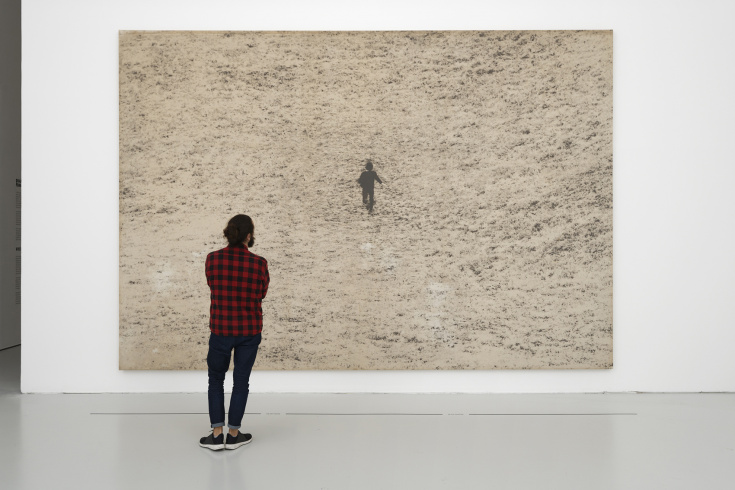Towards the end of the sixties of the last century a new artistic current was born, in sharp contrast and controversy with conventional art. Refusing common techniques and supports, the artists who ideally identify themselves in this movement resort to animals, plants and minerals; materials such as earth, wood, iron, rags, plastic and industrial waste are their preferred supports. The intent is not to “affermazione, indicazione di valori, modello di comportamento” (“affirmation, indication of values, model of behavior”) but to prove the contingency and precariousness of existence. This is Arte Povera.
The reuse of material is common throughout human history and nevertheless in the history of art. Remaining in the twentieth century, for example, the Dadaists already explored creativity in full freedom through the reuse of all available materials and forms; and, also through ready-mades, they gave life to the first installations and performances.
Arte Povera as an attitude
In Arte Povera, however, the rediscovery and choice of materials naturally available in the environment does not arise from economic or availability needs, but from a specific will. It is “an attitude, the possibility of using everything you have in nature and in the animal world”. This is how the critic Germano Celant described it, who coined the name on the occasion of the exhibition of the same name at the Galleria La Bertesca in Genoa in 1967.
The 1960s, moreover, saw social inequalities emerge overwhelmingly following the fleeting post-war economic boom, revealing all the weaknesses of the consumer society that had been structuring itself in the previous decade. As often happens, artists anticipate a common popular sensitivity by being the first to perceive the profound change in cultural values connected to it. Shortly thereafter, in fact, these tensions will explode in conflict, including armed conflict (and it is not by chance, perhaps, that “Appunti per una Guerriglia” (“Notes for a Guerrilla”) is the text in which the 27-year-old Celant theorized this new form of art).
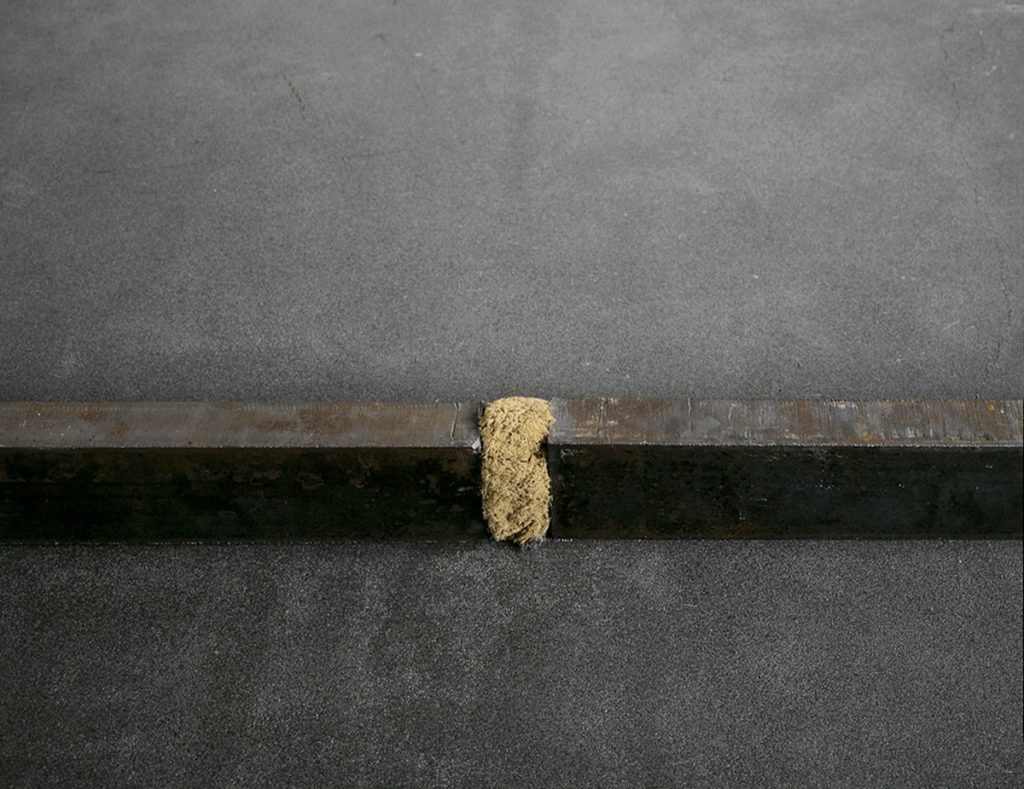
Iron, sponge
Giovanni Anselmo: him
Among the group of artists who recognized themselves in this movement is Giovanni Anselmo (Borgofranco d’Ivrea, 1934). He never specifically attended art schools but, towards the end of the 1950s, he began working as a graphic designer in an advertising studio. Meanwhile, he independently practices painting techniques. A decade later, he will abandon his experiments to focus on the early works of his long career. These immediately reveal the direction of his speculation: the search for the relationship between the energy inherent in matter, which is revealed through combinations of objects and materials of opposite value, in order to obtain maximum tension from the dialectical game and the contrast between the different elements.
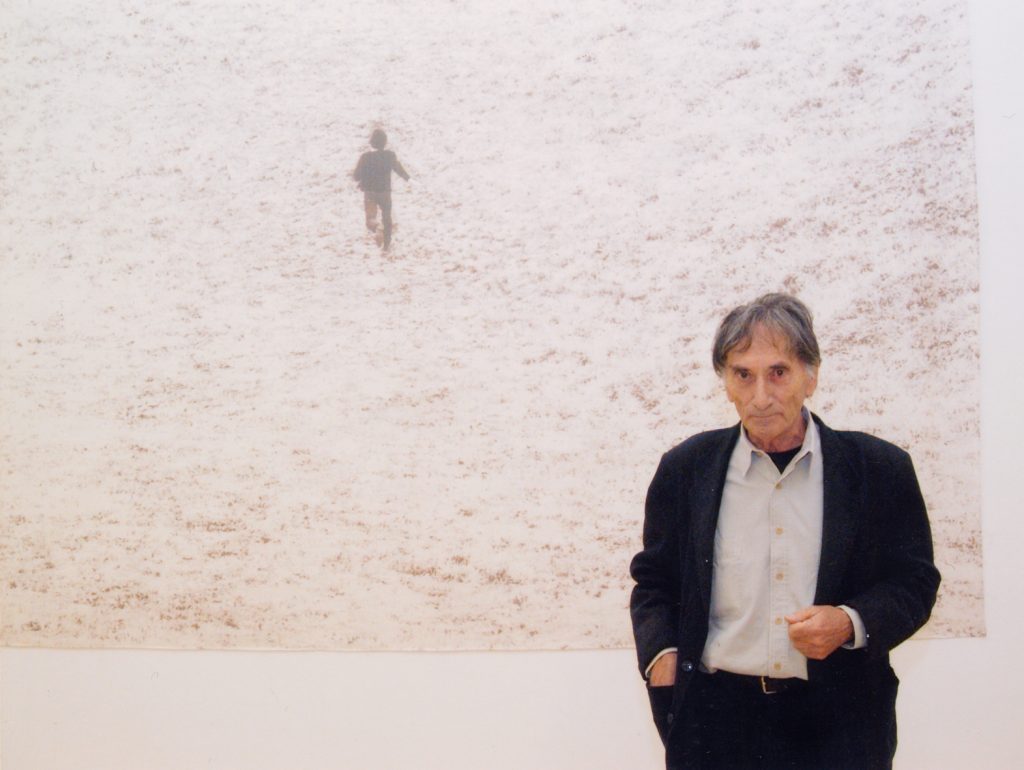
The world, things
In principle, therefore, Giovanni Anselmo explores the properties and physical processes that affect the transformation of matter by manifesting energy. Gravity, swing, tension, inertia, balance, weight are the focus of his speculation. In “Torsione” (“Torsion”), 1968, the tension caused by the twisting of a moleskin cloth is accumulated and returned through the real return thrust exerted by the iron bar around which the fabric is wrapped.
With this work, the artist declares that he is making a gesture: forces and weights are involved in a reciprocal relationship. The sculpture, in fact, not only lies under the weight of the bar but, thanks to the twist, exerts a push against the limit imposed by the wall. There will be six copies of this work, all dated 1968; these differ slightly in length and diameter of the iron bar, a material selected by virtue of its weight, and in the color of the moleskin, which resembles that of a human organ (liver or kidney, the artist will declare), the latter material chosen for its resistance.
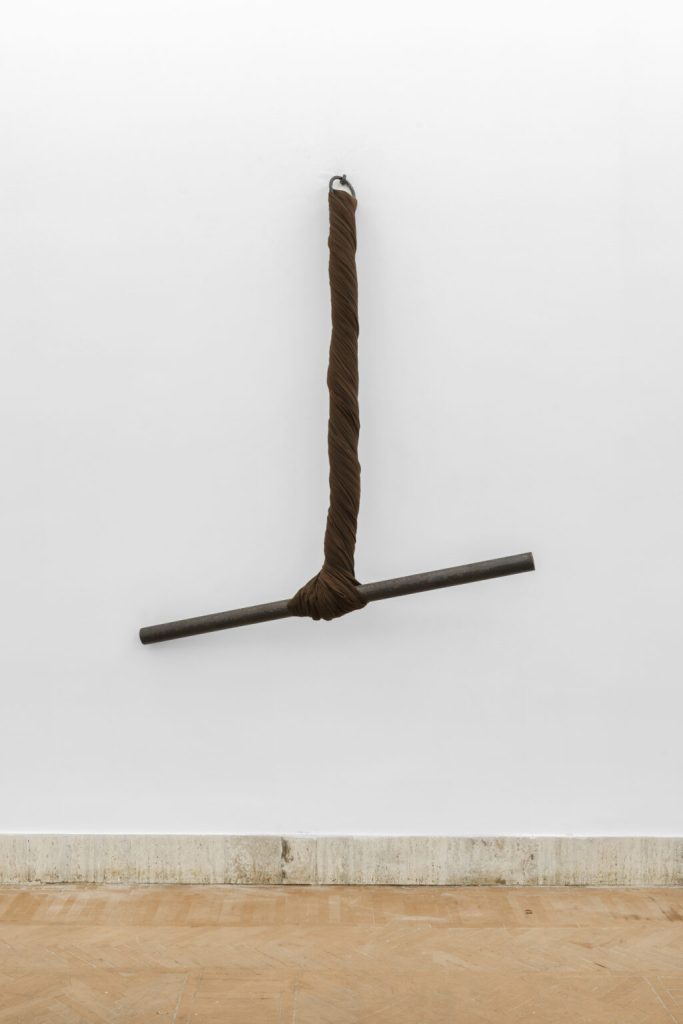
In “Scultura che mangia“ (“Sculpture that eats”) (1968, Sonnabend collection, New York), a decidedly provocative creation, the idea of a work of art as an instrument of transcendence is overcome. This is made up of two blocks of granite, joined by a copper wire; in the middle there is, pressed, a lettuce whose inevitable fate is decay.
The life
Among living things the artist also discovers himself in his entirety: the physical one, of the body and gestures, and the intangible one, like his memory. Through this intrinsic vitality, he begins to experience the meaning of life and nature again.
In “Dove le stelle si avvicinano di una spanna in più” (“Where the Stars Come a Span More”) (2001-2017) he invites the observer to fulfill the childish desire to contemplate the infinite vastness of the universe more closely. Only by climbing on the 28 blocks of diorite that compose it, the work is realized; in fact, it requires the participation of the user so that the situation is created, a moment in which forces such as gravity materialize.
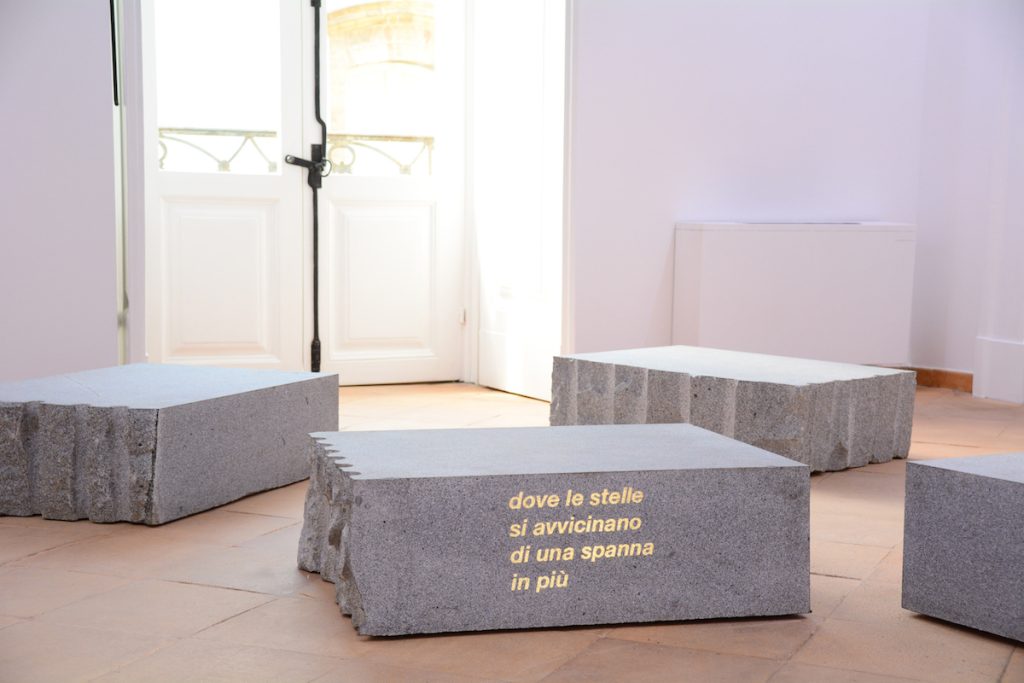
Stones, projector, slide
“Me, the world, things, life, are situations of energy and the point is precisely not to crystallize these situations, but to keep them open and alive according to our life”.
Reserved profile, Giovanni Anselmo prefers not to show himself to the public and work in solitude. Although he is internationally established in the artistic panorama, compared to his poor colleagues, he has had a more contained production.
Worthy of note is the creation of his archive for the conservation and cataloging of works, which he began to shape at the height of his career. Conceived for personal use to keep documents relating to his activity collected over time, the artist makes the documentation available to interested scholars, with prior consent.
In 2016 he was awarded the President of the Republic Prize for Sculpture and, for the occasion, the National Academy of San Luca dedicated a retrospective to the artist to retrace the more than fifty years of his artistic career.
To learn more about the work of other artists: https://www.thegreensideofpink.com/design/arte/2022/alberto-burri/


